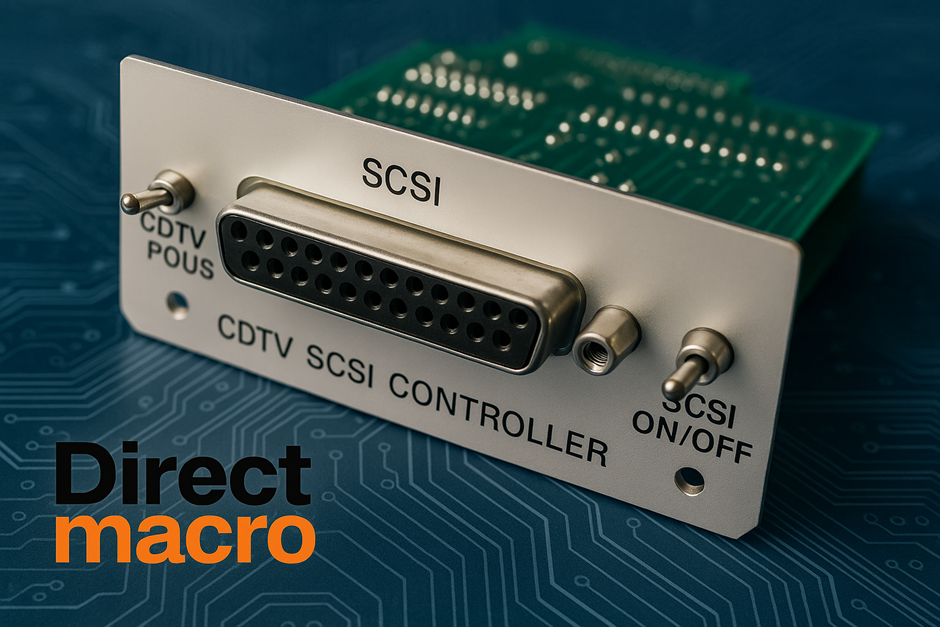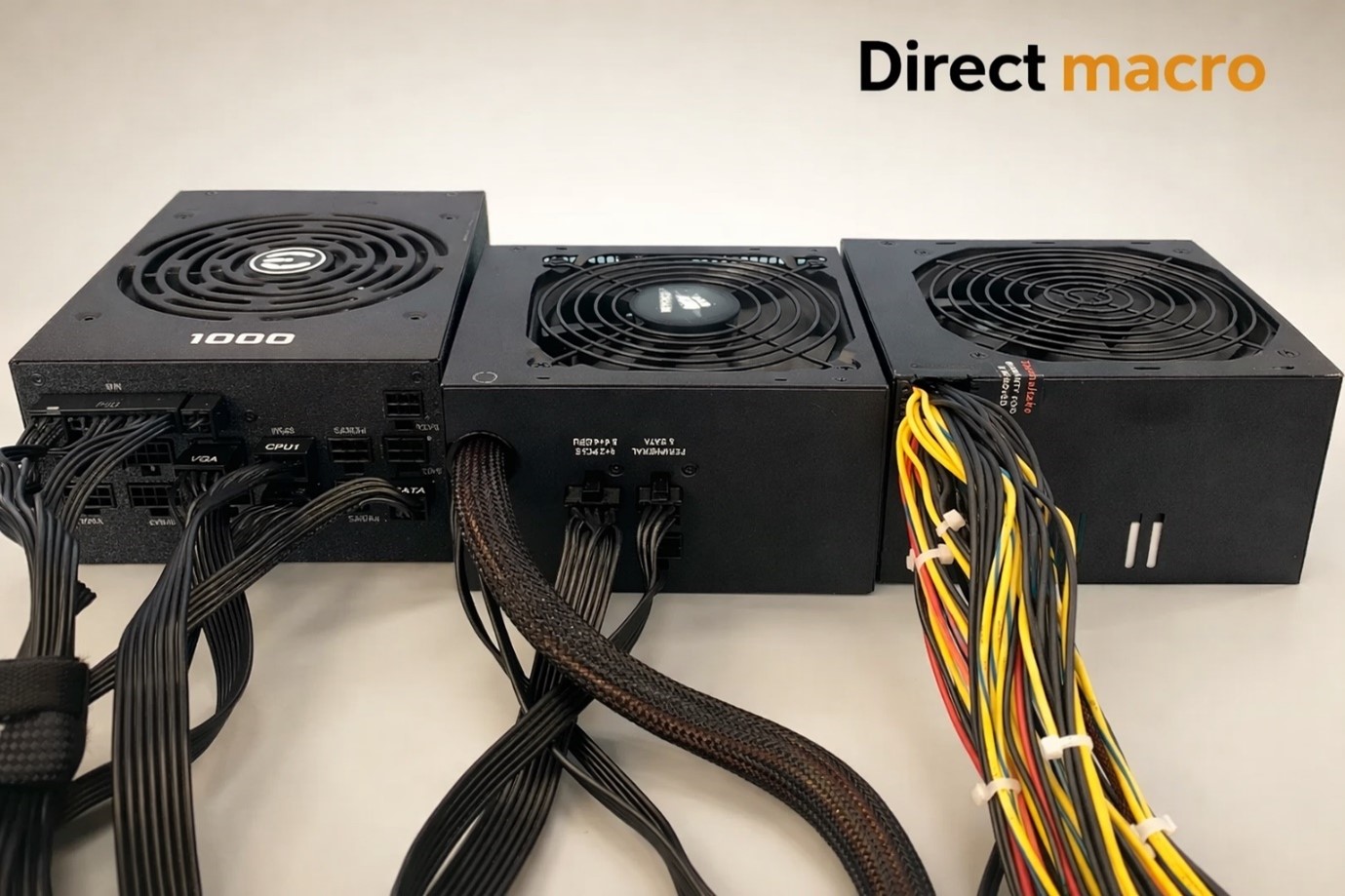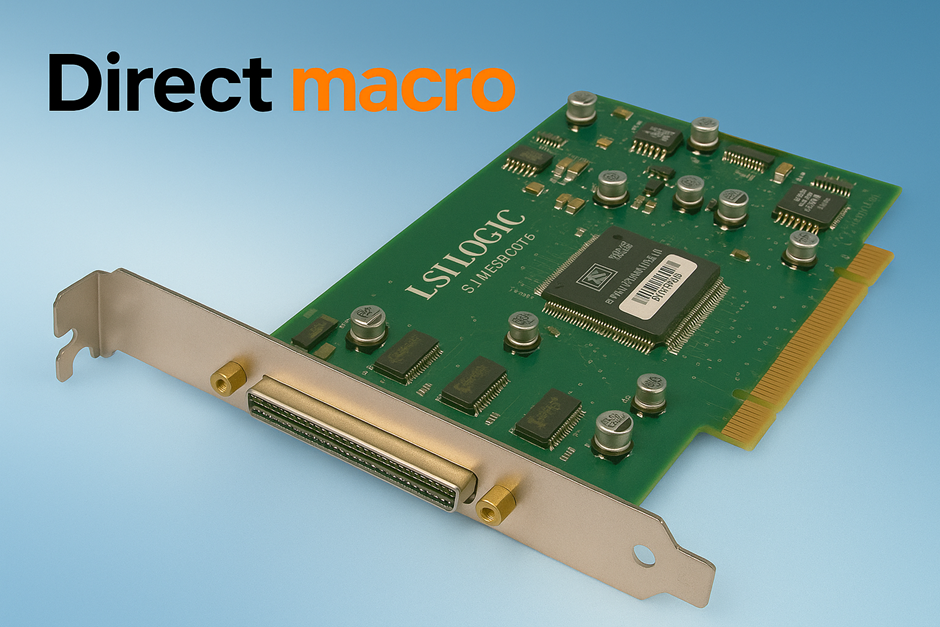SCSI Controller Explained: What It Is and Why Your Storage Needs One
A Small Computer System Interface (SCSI) controller is a hardware component that connects and controls peripheral devices, including storage units. Though Serial Attached SCSI (SAS) and Serial ATA (SATA) have essentially superseded SCSI in modern consumer products, SCSI and its derivatives remain popular in enterprise-grade servers, workstations, and virtualized environments due to their reliability, performance, and scalability.
How Does an SCSI Controller Work?
The SCSI controller is also known as the host adapter. It serves as a bridge between the computer’s motherboard bus (such as PCI or PCIe) and peripheral devices. It oversees the complete process of data transfer and command execution for the attached peripherals and performs the major functions listed below:
- Unique Identification:Every device on an SCSI bus must be assigned a unique ID number. The controller itself also occupies a unique ID. It allows the controller to address and communicate with specific devices.
- Daisy-Chaining:Both internal and external SCSI devices are connected in a linear chain. External devices typically have two ports to facilitate this connection, and the devices at each end of the chain must be properly terminated to prevent signal reflection.
- Intelligent I/O: A SCSI controller has its own onboard processor, unlike older interfaces that rely heavily on the CPU of the computer. It frees up the CPU for other tasks and allows it to manage and execute commands from the host system independently.
- Command Queuing:SCSI controllers can manage and prioritize multiple data requests simultaneously using a feature called command queuing. It allows for more efficient multitasking and higher overall I/O performance.
Types of SCSI Controllers
SCSI controllers have progressed from older parallel interfaces to current serial-based ones. Here are the several types of SCSI controllers you should be aware of before making your next purchase. It allows you to purchase a product that is compatible with your system.
- Parallel SCSI (SPI): The original SCSI interface, now considered a legacy technology. Versions like Ultra320 SCSI used a parallel bus to move data simultaneously but were limited by cable length and the number of devices.
- Serial Attached SCSI (SAS): The modern, high-performance successor to parallel SCSI, SAS uses a point-to-point serial connection. It allows for higher data transfer rates, longer cables, and connectivity for a larger number of devices. SAS controllers are backward-compatible with SATA drives, but the reverse is not true.
- Virtual SCSI Controllers: In virtualized environments like VMware and Hyper-V, the hypervisor emulates an SCSI controller to give virtual machines access to virtual disks. There are different types of virtual SCSI controllers, such as LSI Logic SAS for general compatibility and VMware Paravirtual SCSI for optimized performance.
SCSI vs. SATA
SCSI and SATA differ in their design philosophy and target applications.
- Performance: Modern SAS (Serial Attached SCSI) offers superior performance, especially in terms of data throughput under heavy loads. Enterprise-class SAS drives often have higher rotational speeds than SATA drives.
- Reliability: SAS controllers and drives are built for high-demand, 24/7 server environments and feature robust error handling and recovery mechanisms. SATA drives are generally designed for consumer-level use.
- Scalability: A single SAS controller can support hundreds of devices through the use of expanders, offering greater scalability than SATA. SAS also supports dual-porting, which provides better redundancy and performance in enterprise setups.
- Cost: SATA hardware is significantly less expensive than SAS, making it the dominant standard for most desktop computers and consumer electronics.
Quick Comparison
| Feature | SCSI (SAS – Serial Attached SCSI) | SATA (Serial ATA) |
| Performance | Enterprise-class SAS drives provide higher data throughput under heavy loads, with faster rotational speeds. | Suitable for general use; lower throughput compared to SAS, designed for consumer workloads. |
| Reliability | Built for 24/7 server environments with robust error handling and recovery mechanisms. | Adequate for home and office use but less reliable under constant heavy demand. |
| Scalability | A single SAS controller can support hundreds of devices via expanders and supports dual-porting for redundancy and performance. | Limited scalability; typically connects fewer drives and lacks dual-porting support. |
| Cost | Higher cost due to enterprise-grade design and durability. | Significantly cheaper, making it the dominant choice for desktops and consumer electronics. |
Features
SCSI controllers have various capabilities that have made them appropriate for enterprise-level applications. Let us look at these qualities so you can make the best decision for your next bulk buy.
- High Performance: Modern SCSI derivatives, such as SAS and virtual SCSI options like VMware’s Paravirtual SCSI, are designed for high throughput and low latency, which is essential for performance-sensitive applications like databases and virtualization.
- Daisy-Chaining and Expanders: Parallel SCSI allows for a “daisy-chain” of up to 7 or 15 devices per controller. SAS, its serial successor, uses expanders to support thousands of devices and offers immense scalability for large storage arrays.
- Intelligence: A SCSI controller has its own onboard processor that offloads I/O processing from the main CPU of the computer. It freeing up the CPU for other tasks and improves multitasking performance.
- Reliability: SCSI includes strong error detection and correction mechanisms. It ensures reliable data transmission and minimizes the risk of data corruption. This makes it ideal for critical data storage applications.
Benefits
The features of SCSI controllers translate into significant benefits for users in enterprise environments.
- Enhanced I/O Performance: In virtualized environments, SCSI controllers significantly improve a virtual machine’s I/O performance. High-performance variants like PVSCSI and SAS manage multiple data requests simultaneously and lead to faster read and write operations.
- Versatility: SCSI controllers support a wide range of operating systems, from legacy versions to modern ones. It allows organizations to run diverse OS environments on the same hardware, which simplifies management.
- High Scalability: The ability to connect a large number of devices to a single controller makes SCSI and SAS ideal for large-scale storage solutions. The use of expanders with SAS technology is a key benefit for storage area networks (SANs).
- CPU Offloading: The controller’s onboard processor handles I/O tasks independently. It is freeing up the main CPU for more intensive application processing.
- Reduced Virtualization Overhead: Para virtualized SCSI controllers reduce the resource consumption required by the hypervisor to manage virtual machines, which leads to more efficient data handling and better performance.
Use Cases
SCSI controllers are used in a variety of professional and enterprise applications.
- Enterprise Servers: SCSI is widely used in high-speed, reliable storage connectivity for critical systems, such as databases and file servers.
- High-Performance Computing (HPC): The demand for fast, high-volume data access makes SCSI and SAS controllers well-suited for HPC environments.
- Virtualization and Cloud Computing: Virtualized environments use SCSI protocols to manage virtual hard drives and storage arrays. Hypervisors like VMware and Proxmox emulate SCSI controllers for virtual machines.
- Storage Area Networks (SANs): The SCSI command set is used over other protocols like Fibre Channel and iSCSI to manage block storage in large network deployments.
- Legacy Systems: Older applications and devices that still require parallel SCSI connectivity rely on these controllers for compatibility and functionality.
Applications And Modern Relevance
Parallel SCSI was originally used in several high-end consumer PCs, but due to its complexity and cost, it was eventually replaced by IDE and then SATA. SCSI controllers are today largely employed in the following environments:
- Enterprise Servers: Used for high-speed and reliable storage connectivity in critical systems.
- Storage Area Networks (SANs): The SCSI protocol is used with Fibre Channel or iSCSI to manage block storage in large network deployments.
- Virtualization: Virtual SCSI controllers are the standard for managing virtual machine storage. It offers performance and compatibility advantages over emulated IDE controllers
Top 5 SCSI Controllers (Virtual Controllers in VMware)
In a virtualized context, the best SCSI controllers are the ones recommended for specific use cases in VMware.
1. Broadcom Mega RAID 9670W-16i
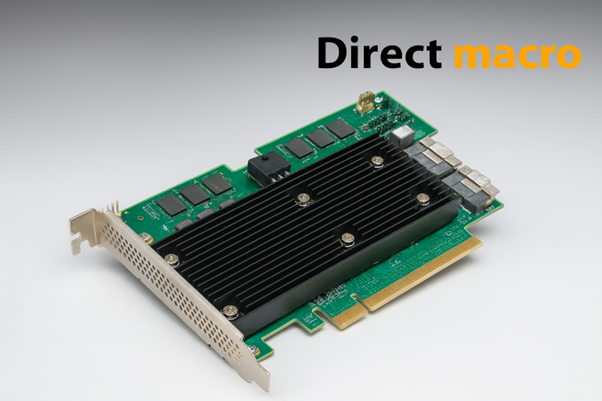
The Broadcom Mega RAID 9670W-16i is a high-performance, third-generation Tri-Mode storage adapter that maximizes storage flexibility and bandwidth. With support for NVMe, SAS, and SATA drives over a PCIe 4.0 interface, it is designed for demanding data center applications and offers advanced RAID capabilities.
- Brand:Broadcom (formerly LSI), a leader in storage technology.
- Key Specifications:PCIe 4.0 interface, 16 internal ports, 24 Gb/s SAS/SATA/NVMe Tri-Mode support. Supports a wide range of RAID levels (0, 1, 5, 6, 10, 50, 60) and features Cache Vault flash backup and a 4 GB cache.
- Why It’s a Top Choice?
This is a high-end, future-proof controller for demanding data center applications. Its Tri-Mode support offers maximum flexibility to work with a mix of storage devices and its PCIe 4.0 interface provides the highest possible bandwidth.
2. HPE Smart Array P408i-a SR Gen10
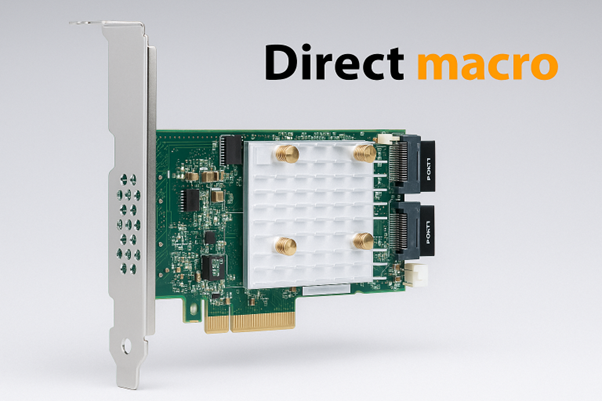
The HPE Smart Array P408i-a is a modular RAID controller designed for HPE ProLiant servers that optimizes performance and storage capacity. Supporting 12 Gb/s SAS and Flash-Backed Write Cache, it operates in Mixed Mode, allowing both RAID and HBA functionality simultaneously.
- Brand:Hewlett Packard Enterprise (HPE), designed for HPE ProLiant servers.
- Key Specifications:12Gb/s SAS/SATA interface, supports Mixed Mode (RAID and HBA), and offers data-at-rest encryption. Integrated with 2GB Flash-Backed Write Cache (FBWC).
- Why It’s a Top Choice?
A standard, reliable enterprise-class controller for HPE server environments. The FBWC protects data in the event of a power failure, and mixed-mode operation provides flexibility for different workloads. Its deep integration with the HPE server ecosystem simplifies management and support.
3. Dell PERC H965i
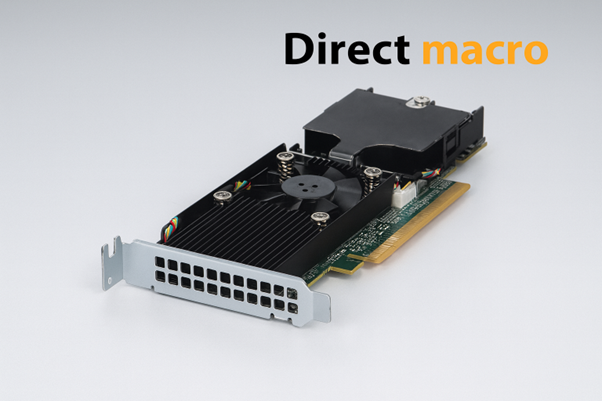
The Dell PERC H965i is a RAID controller card built for Dell PowerEdge servers, providing enterprise-class reliability and high-speed data management. It is designed to handle demanding workloads and ensures compatibility and seamless integration within Dell server environments.
- Brand:Dell, for use in PowerEdge servers.
- Key Specifications:Dell PERC controllers offer robust RAID functionality with hardware RAID implementation for high performance with parity configurations. The H965i is a modern card with a focus on reliability and performance.
- Why It’s a Top Choice?
Provides reliable, high-performance RAID specifically for Dell PowerEdge servers. The tight integration ensures full compatibility and access to Dell’s advanced management tools and technical support.
4. Adaptec 4805SAS 8-Port SAS 128MB ECC Up RAID Controller
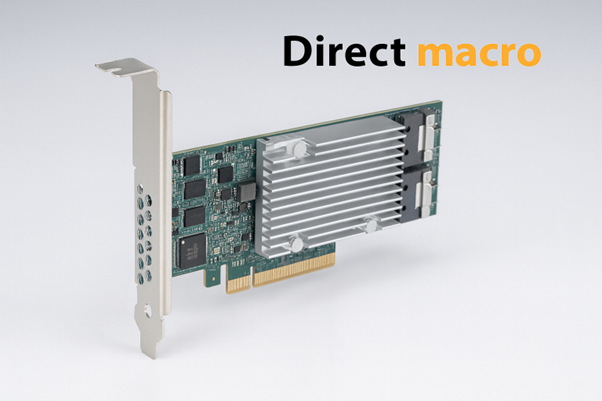
The Adaptec 4805SAS is a legacy 8-port SAS RAID controller that provides reliable 3 Gb/s connectivity for both SAS and SATA drives. It was designed for enterprise servers and workstations from the mid-2000s and features 128MB of ECC cache.
- Brand:Adaptec (originally), a long-standing name in storage solutions.
- Key Specifications:
- Data Transfer Rate:3 Gb/s per port.
- Ports: 8 ports via two x4 internal SAS connectors.
- Interface: PCIe 8-lane host interface.
- RAID Levels: Supports standard RAID 0, 1, 5, 10, and 50, with optional advanced features available.
- Cache: 128MB of ECC-protected DDR2 memory, with an optional upgrade to 256MB.
Why It’s a Top Choice?
- Specific Compatibility:This controller is primarily relevant for older server systems requiring this specific hardware for compatibility, especially those running legacy operating systems from the 2000s.
- Cost-Effectiveness for Legacy Use:It can be a cost-effective replacement for an identical failed controller in an older server, often available from second-hand markets or specialized retailers.
5. Supermicro AOC-S4116L-H16IR-16DD
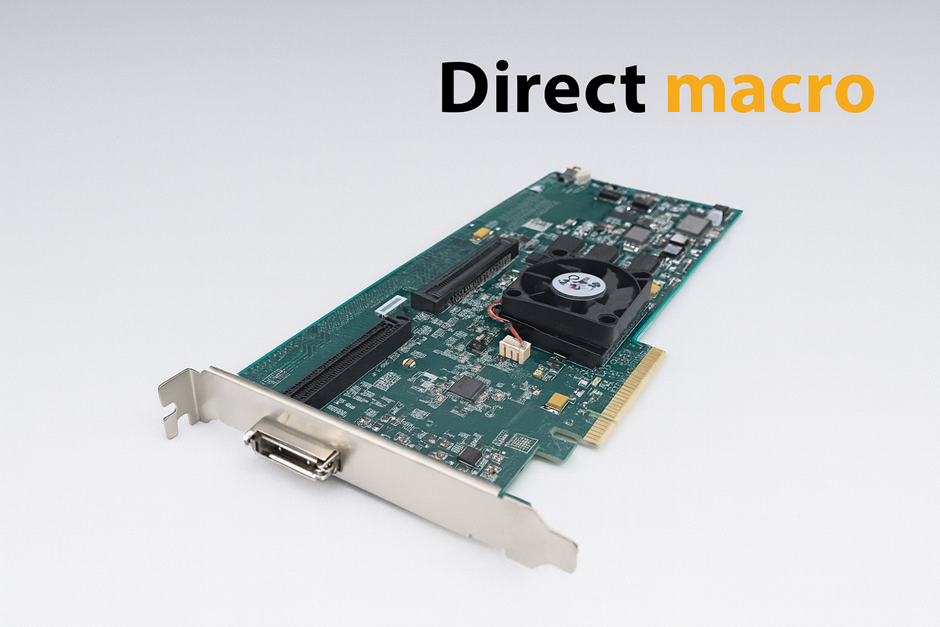
Supermicro AOC-S3916L-H16IR-O is a low-profile RAID controller based on the Broadcom SAS3916 chip. It offers 16 internal 12 Gb/s SAS3 ports and is designed for high-performance storage connectivity, featuring 8 GB of onboard DDR4 cache and supporting multiple RAID levels.
- Brand:Supermicro, a leading provider of enterprise hardware.
- Key Specifications:This controller is built on Broadcom SAS IC technology and features 16 internal SAS3 ports for high-performance connectivity. It supports 12 Gb/s SAS and 6 Gb/s SATA drives, offers comprehensive RAID levels (including 0, 1, 5, 6, 10, 50, and 60), and includes 8 GB of onboard DDR4 cache memory.
- Why It’s a Top Choice?
The AOC-S3916L-H16IR-O delivers a robust and reliable RAID solution for enterprise servers. Its combination of high-speed connectivity, hardware RAID architecture, and expansive drive support makes it an excellent choice for demanding storage applications within the Supermicro ecosystem.
Configuring SCSI Controllers in VMware
To configure an SCSI controller for a virtual machine in VMware, you can follow these general steps:
- Select The Virtual Machine
From the vSphere Client, right-click the virtual machine and choose Edit Settings. - Add A New Controller
In the Virtual Hardware tab, click Add New Device and select SCSI Controller from the menu. - Choose the Controller Type
Select the desired SCSI controller type, such as VMware Paravirtual, LSI Logic SAS, or Bus Logic Parallel, depending on the guest OS and performance requirements. - Add or Move a Virtual Disk
- To add a new disk, select Hard Diskfrom the Add New Device menu and choose the newly added controller under Virtual Device Node.
- To move an existing disk, change its Virtual Device Nodeto the new controller. The VM must be powered off to move its boot disk to a different controller type, and the guest OS may need drivers installed.
- Save Changes
Click OK to apply the configuration.
Direct Macro – The Best Place to Buy SCSI Controller
Direct Macro is an online IT hardware platform that offers computer hardware such as SCSI and SAS controller cards for server and enterprise applications. When acquiring a controller card, make sure the card matches the server’s I/O bus type and is compatible with current devices.
Understanding the characteristics of different controller cards allows you to make an informed decision that improves your storage system and computing experience. For additional information, call us at (855) 483-7810 or visit our website Direct Macro to receive a bulk estimate.
Final Thoughts
While parallel SCSI is a vintage technology, serial descendants such as SAS remain critical components of current enterprise IT. In virtualization, emulated SCSI controllers outperform earlier emulated interfaces, making them an essential component of virtual machine configuration. Understanding the many controllers available in hypervisors like VMware enables managers to improve performance for specific workloads, such as legacy applications and high-throughput database servers.
FAQs
- How does an SCSI controller differ from a SATA controller?
SCSI (and SAS) are typically more robust, faster, and more scalable than SATA, making them better suited for enterprise server environments. SATA is more common and affordable for consumer desktop use. SAS controllers are backward compatible with SATA drives, but not vice versa. - Do I need an SCSI controller for modern computers?
For most consumer PCs, no. Interfaces like SATA and NVMe have replaced SCSI for connecting internal storage. However, SCSI controllers are still essential for enterprise servers, workstations, and virtualization platforms where high performance and scalability are critical. - Why is an SCSI controller needed in a virtual machine?
In a VM, a virtual SCSI controller acts as a standardized, performant interface for the guest OS to access virtual storage disks provided by the hypervisor. This avoids the limitations of older emulated IDE controllers. - What is the benefit of using multiple SCSI controllers in a VM?
Adding multiple virtual SCSI controllers can help to distribute the I/O load and increase performance, especially for VMs with multiple disks. Each controller adds a separate disk queue, which can prevent contention. - How can I change the SCSI controller type on an existing VM?
First, power off the VM. Then, in the VM’s settings, add the desired new controller (e.g., PVSCSI) and move the virtual disks to it. You may need to install the drivers for the new controller type within the guest OS before attempting this with the boot disk.
Do you need advice on buying or selling hardware? Fill out the form and we will return.

Sales & Support
(855) 483-7810
We respond within 48 hours on all weekdays
Opening hours
Monday to thursday: 08.30-16.30
Friday: 08.30-15.30



